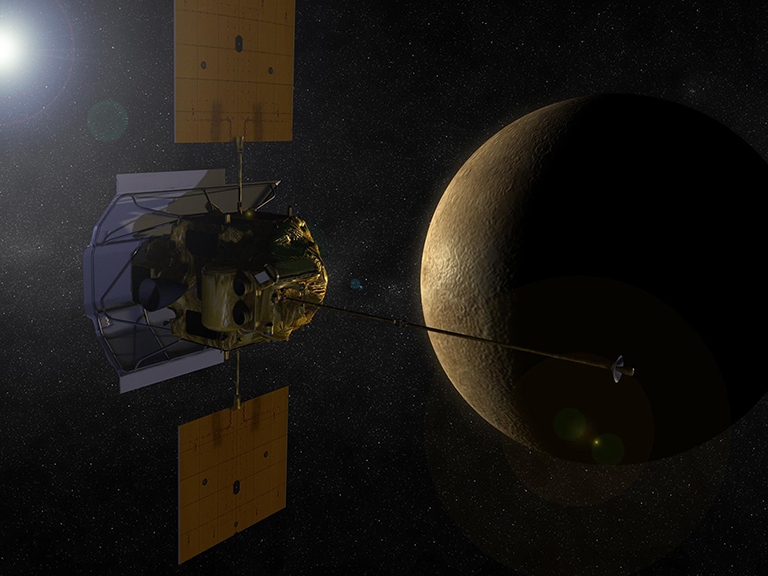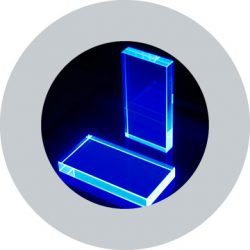
NASA’s MESSENGER spacecraft orbited Mercury for more than four years. Among its accomplishments, the mission determined Mercury’s surface composition, revealed its geological history, discovered details about its internal magnetic field, and verified its polar deposits are dominantly water-ice. Measurements by X-ray, gamma-ray, and neutron spectrometers on the MESSENGER spacecraft revealed Mercury’s surface to have surprisingly high abundances of the moderately volatile elements sodium, sulfur, potassium, chlorine, and thorium, and a low abundance of iron. MESSENGER has provided multiple lines of evidence that Mercury’s polar regions host water ice. The permanently shadowed craters near Mercury’s north pole have thermal environments that allow water ice to be stable in craters either at the surface or a few tens of centimeters below the surface.
The Gamma Ray and Neutron Spectrometer (GRNS) with Scintacor GS20 Scintillators
The Gamma Ray and Neutron Spectrometer, with Scintacor GS20 scintillators detected gamma rays and neutrons emitted by radioactive elements on Mercury’s surface or by surface elements that have been stimulated by cosmic rays. It was used to map the relative abundances of different elements to help to determine if there is ice at Mercury’s poles, which are never exposed to direct sunlight. GRNS detects gamma rays with a high-purity germanium semiconductor crystal, from which electric charge pulses are collected, caused by interaction with the gamma rays. The charge collected is proportional to the gamma ray energy. GRNS detects neutrons with scintillators, which are materials (lithium-rich glass for low-energy neutrons) that give off a tiny pulse of light when struck by a gamma ray or neutron. The brightness of each light pulse is directly related to the energy of the neutron. So the instrument counts gamma rays and neutrons and measures their individual energies at the same time.

How it works
To understand this process, it is first important to know what neutrons and gamma rays are, and why they are present near Mercury. Neutrons are electrically neutral particles that, together with positively charged protons, make up the centers or nuclei of atoms. Gamma rays are little packets of high energy light. Gamma rays are more energetic than the visible light we see — even more than ultraviolet light or x-rays.
Both neutrons and gamma rays in the vicinity of Mercury can be produced by the cosmic rays that continually bombard Mercurys surface. Cosmic rays are mostly protons from our Sun or other more distant sources in the universe. They easily reach Mercurys surface because, unlike Earth, the planet lacks an atmosphere to intercept them.
These cosmic rays are moving so fast that, when they collide with an atom on the surface, they can dislodge neutrons from the atoms nucleus. Some of the dislodged neutrons can then collide with the nuclei of other atoms, giving energy to them. When these nuclei return to their normal energy state, they can give off gamma rays.
The neutrons and gamma rays that travel far enough from Mercury can then be intercepted by MESSENGER and counted. Additionally, gamma rays can be produced by the decay of radioactive elements like uranium and thorium on the surface. The flux of these neutrons and gamma rays is higher at lower altitudes, so detection by GRNS is most effective when MESSENGER is orbiting Mercury.

The purpose of the gamma ray and neutron spectrometer is to provide information about the elements that make up Mercury’s surface crust. More exactly, it will provide information about the uppermost tens of centimeters of the crust. This instrument measures the numbers and energies of gamma rays and neutrons that reach the MESSENGER probe as it passes near the planet. Find out more about Scintacor 6-lithium-glass for neutron detection or contact our sales team to discuss your requirements.


